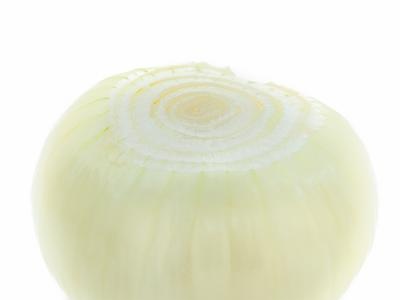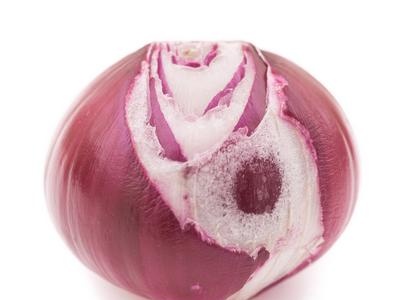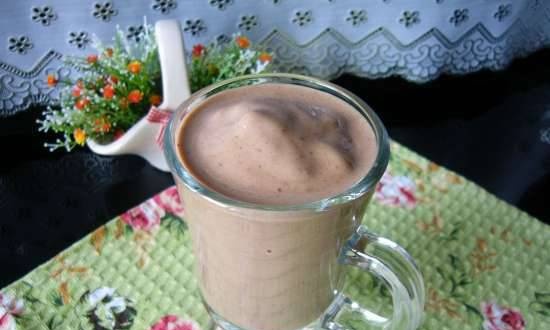|
 Perhaps, nowhere in old Russia were they fond of onions as much as in the Village of Kichanzino near Arzamas. They took care of it out of need. The land was too small. If you sow bread, you will not live. Onions gave more income. Perhaps, nowhere in old Russia were they fond of onions as much as in the Village of Kichanzino near Arzamas. They took care of it out of need. The land was too small. If you sow bread, you will not live. Onions gave more income.
The peasants looked after him like no other vegetable. But the product grew in lumps, one onion weighing half a kilo. The most important thing, however, was to preserve the wealth grown in the winter. Dried on the beds. And in order to dry well, they heated them with birch wood. And yet, with such an abundance of bulbs in the huts, the bathhouse was always stuffy. The walls, cut from spruce logs, withstood not a hundred, but two decades. The corners were rotting, and the residents of Kichanzin patched them in with bricks. So then there were huts with brick patches. It was surprising how the owners themselves kept their health. Apparently, they were rescued by volatile secretions of onions - phytoncides.
The fame of the Arzamas bow resounded far beyond the borders of the district. "Lukovniki" went with the goods to the neighboring provinces - Penza and Tambov. In those parts, onions were considered the first delicacy. It was served for dessert at all parties and receptions, and especially at weddings. The newlyweds and guests after tea crunched a "turnip", deliberately coyly lowering their eyes and blushing with pleasure.
However, followers of the Arzamas soon appeared in the Penza province. The onion capital was the village of Bessonovka, twelve versts from Penza. The Bessonites took into account the sad experience of the huts darned with bricks and applied a different architecture. They began to build special huts for the bow - three floors. Up to nine meters high! Real skyscrapers. They occupied the middle, second floor themselves. On the first one kept the "turnip". The third was assigned to a small first-year onion. He was called sevok.
 Cunning Bessonians located their onion expanses on the meadow side of the Sura River. Hills towered beside them, and from them every year the downpours carried thick black earth. And there was no need to fertilize. This went on for more than one century. Cunning Bessonians located their onion expanses on the meadow side of the Sura River. Hills towered beside them, and from them every year the downpours carried thick black earth. And there was no need to fertilize. This went on for more than one century.
The village of Bessonovka produced a million poods of onions every year! Of course, growing such a heap was not easy.
The peasants used every free hour of the day, and even took over the night. History has retained an interesting fact. Previously, the main postal route from Moscow to Siberia passed through Bessonovka. Newcomers, whenever they arrived in the village - at night or during the day, at dawn or at dusk - would find peasants on their onion ridges.
“When do they sleep?” The travelers wondered. “Some kind of sleepless!”
Gradually, the name of Bessonovka stuck behind the village, and so firmly that no one remembers the old name of the village.
And in the village of Myachkovo near Kolomna, gardeners bred a giant onion variety. "Turnip" is the size of a saucer. 13 centimeters across. Even such an expert in gardening as Professor M. Rytov was unable to find out how they succeeded. He suspected that they crossed an ordinary yellow Russian bow with a foreign Madeiran flat bow, which has exactly such dimensions and does not have a pungent pungency.
Myachkovo bow turned out to be so good that it was supplied not only to Moscow, but also to Paris. For a hundred years, the Parisians ate onions near Moscow. However, other Russian bows were also exported - to England, Germany and the Scandinavian countries. The British bought for food and for distillation. A green feather was received in greenhouses. They did not manage their bow well. Only in the most recent years have they finally mastered the onion industry.
The bow did not work out well on southern Sakhalin either. And although there are many wild relatives on the island, the cultivated onion refused to produce products. The climate hindered success. Onions need summer to begin with warm and humid weather and end in dry weather. On Sakhalin, the opposite is true. When in the spring the plant needs to gain strength, cold winds blow and there is great dryness. By the fall, the island will warm up, but, as luck would have it, it starts to rain and fogs creep in. Where can the bulbs ripen here! Instead, sheaves of juicy green feathers.And nothing else. If, nevertheless, the bulb is tied, then the greens on it by the fall will not fade. The neck of the bulb will not dry out. Stays thick and juicy. Agronomists with annoyance call such specimens "thick necks". And they are afraid to send them to the warehouse. Germs easily seep through the thick neck, and the onions quickly rot.
The Russian settlers still managed to fix the onions on Sakhalin. The variety helped them ... Bessonovsky! Where he does not help out: in Ufa, and in Omsk, and even in England, and now here in the Far East. But the conditions are different everywhere.
Observing the truth, it must be said that Sakhalin is big and the Bessonovsky bow is not always successful. To solve the problem, Professor T. Zimina studied many wild varieties of onions. Finally, Mongutan found what she was looking for on the mud volcano. Mongutan onions are quite good for food. True, the bulbs are smaller, but they ripen by the end of June. Not bad for culture.
Of course, onions are difficult to manage on Sakhalin alone. It is difficult to grow a "turnip" in the tropics. And the need for it there is no less, if not great. In Ghana, for example, they believe that the bow is the best way to scare away snakes. Therefore, it is bred near dwellings, and often huts are surrounded by a solid onion palisade. Well, if you are bitten by a snake, then the same bow is used as an antidote. True, there are not always mature bulbs in the home garden. Instead, they take greens and roll them into a dense ball. Such an object is captured just in case on the road.
In the tropics, onions require more attention to themselves than in our temperate zone. In drought, you have to water several times a day. And for this reason, plantations are located closer to streams. But when the rains start pouring down and the flooding begins, the garden can be washed away. Earthen dams have to be erected urgently. In general, the farmer does not have to sit idly by. And so - all year round. And since Ghanaians are by nature very sociable people, they must definitely choose the time and go to visit their relatives. But how to do this if you cannot leave the garden for a day? You have to choose: either relatives or onions! There is no third way.
 Another big problem is the onion smell. When to eat onions? In the morning it is impossible, otherwise you will not appear in public. During the day, of course, too. Is that in the evening? But for some people, the onion aroma lasts 72 hours. Three days! It turns out that they can only eat on Friday, if there are two days off. Another big problem is the onion smell. When to eat onions? In the morning it is impossible, otherwise you will not appear in public. During the day, of course, too. Is that in the evening? But for some people, the onion aroma lasts 72 hours. Three days! It turns out that they can only eat on Friday, if there are two days off.
Until now, the problem of onion odors has not been solved. We began to study it even before the war. But it was not possible to find out the exact reason.
But in general, despite the smell, humanity cannot refuse onions. Culinary trendsetters - Parisian chefs in their time invented onion soup. Experts say: he has not seen Paris, who has not been to the Paris market (remember E. Zola's "The Belly of Paris"?) And did not eat onion soup there. Now the famous market has been moved from the city center almost to the outskirts of Paris.
But the residents of the capital believe that there will be a tangible memory of this romantic place in the form of a Gallic onion soup that will live for centuries! The aroma, apparently, does not really bother them.
As for the smell of fresh onions, even in the old years they tried to refresh the rooms of seriously ill patients. To do this, cut the onion in half and put it in different parts of the room. After a while, they were replaced with freshly cut ones. And in 1909 the magazine "Khutoryanin" warmly recommended the same halves to protect cherry orchards from birds, and especially from sparrows. The birds, according to the magazine, have such a strong aversion to the smell of onions that they immediately leave the cherry orchard, as soon as the owner places half of the bulbs between the branches and twigs of protected trees.
I must admit that, despite all the successes and discoveries, there is still no complete list of substances "responsible" for the onion smell.
We know only one thing: that it is based on sulfur compounds.
A. Smirnov. Tops and roots
|
 Perhaps, nowhere in old Russia were they fond of onions as much as in the Village of Kichanzino near Arzamas. They took care of it out of need. The land was too small. If you sow bread, you will not live. Onions gave more income.
Perhaps, nowhere in old Russia were they fond of onions as much as in the Village of Kichanzino near Arzamas. They took care of it out of need. The land was too small. If you sow bread, you will not live. Onions gave more income. Cunning Bessonians located their onion expanses on the meadow side of the Sura River. Hills towered beside them, and from them every year the downpours carried thick black earth. And there was no need to fertilize. This went on for more than one century.
Cunning Bessonians located their onion expanses on the meadow side of the Sura River. Hills towered beside them, and from them every year the downpours carried thick black earth. And there was no need to fertilize. This went on for more than one century.





































































